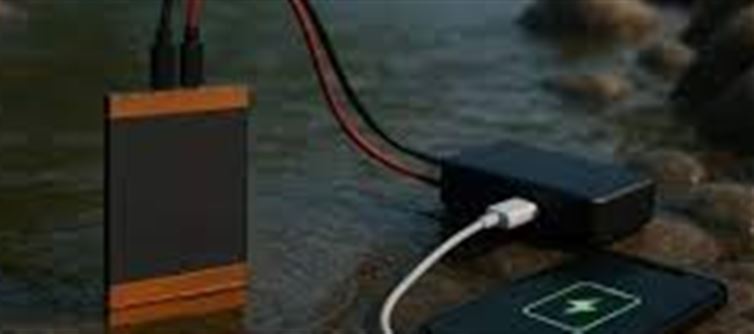
In a world racing for sustainable energy solutions, researchers at the Indian Institute of technology indore (IIT Indore) have created something extraordinary — a device that generates electricity using just water and air. No sunlight, no batteries, no moving parts. This innovation could redefine how we power small devices in rural, urban, and off-grid settings.
Here are the 8 most fascinating insights into this groundbreaking invention:
1 The Magic of Evaporation Turned Into Energy
At its core, the device taps into the natural process of water evaporation. As water moves upward through microscopic channels in a specially engineered membrane and evaporates, ions separate to create a steady flow of electricity. This quiet, eco-friendly process mimics nature while delivering reliable energy.
2 The Science Behind the Device
The team, led by Prof. Dhirendra K. Rai and researcher Khushwant Singh from IIT Indore’s Sustainable Energy and Environmental Materials Lab, used a graphene oxide membrane stabilized with zinc-imidazole.
- When partially immersed in water, the membrane generates up to 0.75 volts per 3x2 cm² sheet.
- By combining multiple membranes, the output can be scaled up.
This smart use of nanomaterials makes the design both efficient and durable.
3 Works With Any Type of Water
One of the device’s most remarkable features is its versatility. It doesn’t demand clean, purified water. Whether it’s saline, muddy, or unfiltered, the device continues to function reliably for months. This makes it especially useful for remote villages, farms, or disaster-hit regions where clean water isn’t always available.
4 Energy Anytime, Anywhere — No Sunlight Needed
Unlike solar panels, which depend on sunlight, this device is independent of weather and location. It works:
- Indoors
- At night
- Under cloudy skies
This means consistent power supply in places where solar or wind energy struggles, filling critical gaps in energy accessibility.
5 Potential Game-Changer for Rural & Remote Areas
The innovation could transform life in underserved communities. Possible applications include:
- Environmental sensors in farms and forests.
- Emergency lighting during blackouts.
- Low-power medical wearables in rural clinics.
- Portable chargers for essential devices.
For villages without reliable grids, it could act as nature’s own trickle charger.
6 Director’s Vision: Science That Serves Society
Prof. Suhas Joshi, director of IIT Indore, praised the device as a “testament to knowledge that matters.” He emphasized that such innovations could bridge the energy divide by providing affordable, sustainable power to millions while reaffirming science’s role in creating a cleaner, fairer future.
7 Affordable & Scalable Design on the Horizon
Prof. Rai and his team plan to cut costs further by replacing advanced materials with clay-based compounds and common minerals. This approach aims to make the device mass-producible and affordable for widespread use. The long-term vision? Devices that power self-charging textiles, smart walls, or sensor-equipped homes.
8 A Peek Into the Future of Clean Energy
This device isn’t just a lab success — it’s a vision of the future. By harnessing everyday elements like water and air, it could pave the way for self-powered systems in smart cities, agriculture, healthcare, and disaster management. Imagine energy-generating clothes or walls that fuel indoor sensors — possibilities are endless.
Final Word: Nature Becomes the Power Plant
The IIT indore team has proven that big innovations can come from simple ideas. By transforming evaporation — a process as old as nature itself — into electricity, they’ve unlocked a portable, affordable, and eco-friendly energy source.
Disclaimer:
The views and opinions expressed in this article are those of the author and do not necessarily reflect the official policy or position of any agency, organization, employer, or company. All information provided is for general informational purposes only. While every effort has been made to ensure accuracy, we make no representations or warranties of any kind, express or implied, about the completeness, reliability, or suitability of the information contained herein. Readers are advised to verify facts and seek professional advice where necessary. Any reliance placed on such information is strictly at the reader’s own risk..jpg)




 click and follow Indiaherald WhatsApp channel
click and follow Indiaherald WhatsApp channel